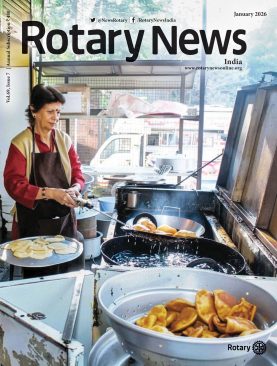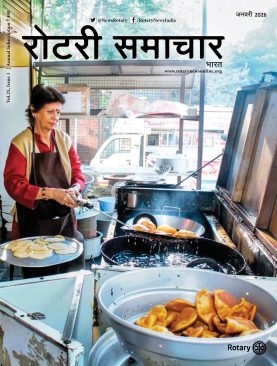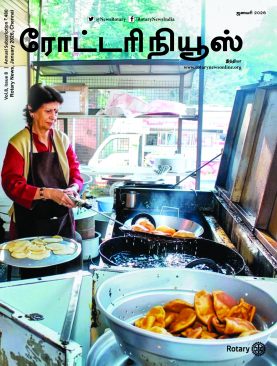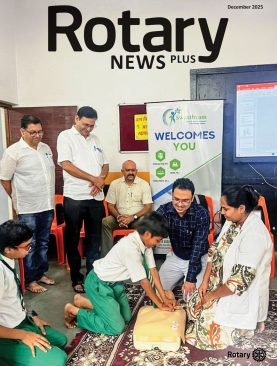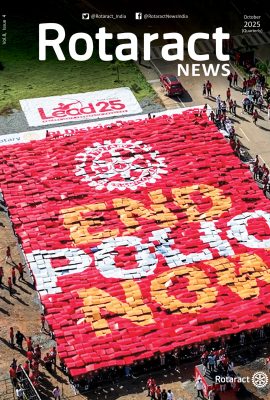On July 30, two villages in the Wayanad district of Kerala — Chooralmala and Mundakkai — virtually disappeared overnight, hit by devastating landslides triggered by torrential rains. In the popular tourist destination Wayanad, these two villages were particularly known for their scenic landscape and waterfalls. In what has been popularly known as God’s Own Country, this natural disaster, man-made in some part, is one in a series that have overwhelmed this state in the last several years. The Wayanad tragedy is the worst natural disaster Kerala has seen since the 2018 floods.
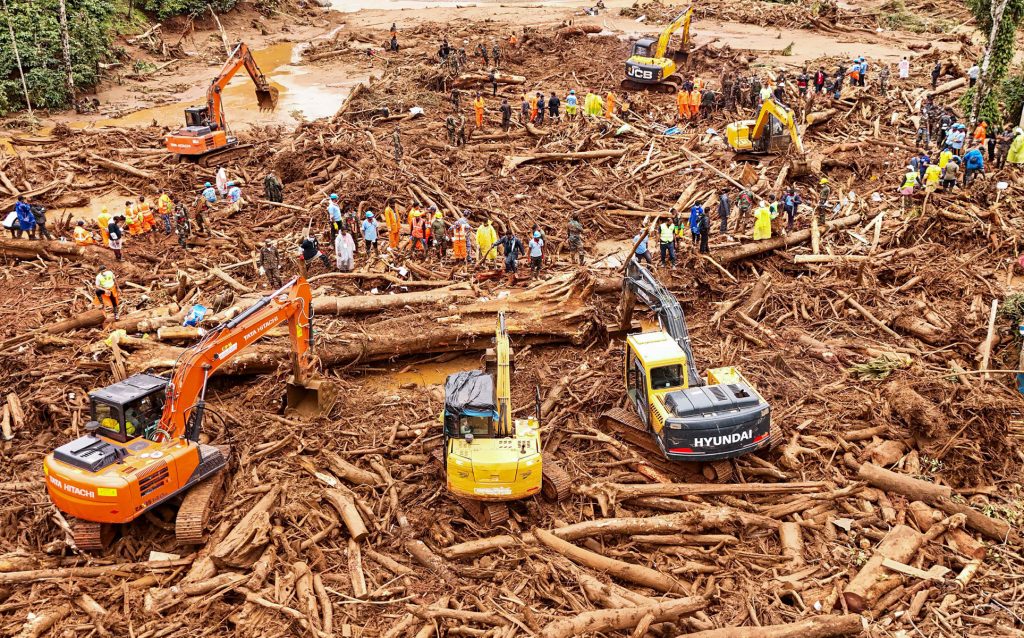
While over 430 persons were killed in this tragedy, over 130 were reported missing and a massive rescue operation was jointly launched to find possible survivors by the Indian Army, National Disaster Response Force (NDRF), Fire and Rescue Services, Forest and Wildlife authorities, and the police, along with hundreds of volunteers. Several hundred stranded people in the surrounding forest area and slushy locations were rescued and over 10,000 landed up in relief camps.
It was time for Rotarians from the immediate region, RID 3204, the rest of Kerala, and beyond the state, to respond. “This was tragedy at an unprecedented level; human bodies and body parts were washed out in the Chaliyar River about 25–30km away from the disaster site. The belongings, savings, and entire homes of hundreds of people were buried along with their dreams in this nightmare,” says K P Ravindranath, a member of RC Sulthan Bathery, one of the five clubs in Wayanad.
The multiple landslides damaged 1,555 houses, 209 shops, two schools, three bridges were washed away, 136 community buildings were damaged and 626 hectares of farm land was destroyed. This is the worst landslides in the history of Kerala, the financial loss is estimated to be around ₹1,200 crore, according to the Kerala government.
But however grave these numbers might be, they cannot even come close to the shock, misery, suffering and pain of the people, who lost not only every material thing they possessed but also several loved ones. Malayalam channels showed several videos of the first response teams, comprising forest and police personnel, that had reached ground zero, after getting calls from the local residents alarmed by the marching elephants which had strayed away from their habitat. Animals always know better, don’t they?

The members of these first response teams interviewed by the media said they “will never forget the horror and magnitude of the tragedy they witnessed at the site. One of the policemen on duty said he will hear in his head for a long time the screams of people as huge boulders, trees and water came gushing down, washing away everything. He admitted that they did what they could but for the most part had to helplessly watch many people being washed away as an avalanche of mud, boulders and trees came crashing down.
A host of CCTV visuals recovered from a couple of shops in the area beamed into lakhs of homes the horror and intensity of the massive calamity suffered by the people of Wayanad. The visuals showed flood water gushing into closed shops destroying the shutters and concrete walls in the blink of an eye. The visuals aired by Malayalam channels from CCTV cameras at the shops in Chooralmala, one of the hamlets completely destroyed in the disaster, were beyond human imagination. Boulders, trees, animal carcasses… all of them could be seen crashing into these shops thanks to the fury of the gushing waters.
Ravindranath adds that Wayanad is often referred as the Kashmir of Kerala or a Green Paradise, “being blessed with magnificent waterfalls, streams, caves, majestic blue mountains, green valleys and wildlife. With moderately pleasant climate throughout the year, it is a tourist’s paradise. It is estimated that there are more than 5,000 tourist resorts and homestays in Wayanad within a 2,131sqkm area, apart from several hotels and eateries.”
5 Rotary clubs in Wayanad provided relief material such as medicines, bedsheets, tarpaulin, etc. RID 3204 DG Santhosh Sreedhar has promised Rotary’s help for rehabilitation to the tune of ₹2 crore.
The region experiences heavy rainfall during the monsoon season (July to September) and has many ecologically sensitive areas, especially on the eastern side of the ghats, which are prone to landslides. During the monsoon each year, people living in these areas live in constant fear. In August 2019, Puthumala, a tea estate village near Meppadi was wiped out by a huge landslide. This year too, the heavy rainfall had made some families shift to safer locales just a couple of days earlier, he says.
Both Mundakkai and Chooralmala are beautiful, small villages located in Meppadi panchayat in North Kerala, known for its hilly terrain and agricultural land. They house agri families, with many people working on the tea plantations. Common crops include coffee, tea, pepper, and various spices.
Since July this year, Wayanad has been receiving continuous rainfall and Mundakkai, a tea estate village, received 572mm rainfall in the 48 hours leading to the unfortunate day. Three terrible and devastating landslides hit Mundakkai and Chooralmala villages in the early hours of July 30, destroying the entire villages, burying houses and buildings along with the residents under mud. One of the survivors told him: “It was raining throughout the day and we were afraid, but as we have lived here for several years, we thought nothing unusual would happen. But around midnight we heard a blast, and within minutes, mud along with water started pouring into our house. Luckily, we immediately moved to a safer area. Very soon, the entire house was under mud and water.”

Once relief work was started by the district administration with the help of local volunteers, police, Fire and Rescue Service of Kerala, and later the Indian Army, Rotarians from all five clubs in Wayanad — Rotary Kalpetta, Kabani Valley Mananthavady, Pepper Town Pulpally, Sulthan Bathery Central and Sulthan Bathery — rushed to the relief camps and provided essential relief items, as entry to the disaster site was restricted. A joint meeting of all five Rotary clubs was held and it was decided to do what Rotary does best during natural disasters: provide immediate and long-term relief.
Giving details of the work done by these clubs, T Jayachandran, secretary, RC Sulthan Bathery Central, said the members of RCs Nilambur and Mukkam rolled up their sleeves and helped recover dead bodies form the Chaliyar river and provided assistance in wrapping them up and transported them to Wayanad. Rotary Sulthan Bathery Central conducted an eye and ENT camp for the survivors at the relief camp at Meppadi on two successive days in the first week of August. Over 170 people were screened and 140 spectacles were given. RID 3204 DG Santhosh Sreedhar presided over the event where medicines were also distributed. DGE Bijosh Manuel visited the camp on both days.
All the clubs in Wayanad provided immediately required relief material such as gloves, masks, medicines, bedsheets, tarpaulin, sanitary napkins, buckets etc in the relief camps. Rotary Kalpetta, along with Rotary Manjeri and Cyber City, and RMB, Kozhikode, provided the much-needed bio-toilets and portable toilets in the relief camps.
I managed to get permission from the authorities to visit the site, being a Rotarian. Around 5,000 volunteers were still working to remove the mud and recover human bodies and their belongings. There was an eerie silence and the shock was palpable as nobody was talking. The faces were frozen, and some of them were hoping against hope to meet their missing ones, if not alive, to at least get their remains,” says Bharath Das, past president of RC Manjeri.
The region experiences heavy rainfall during the monsoon season and has many ecologically sensitive areas, especially on the eastern side of the ghats, which are prone to landslides.
The two beautiful hamlets — Vellarimala and Chooralmala — were separated by the river and mud as the bridge collapsed and was wiped off by the water. The military forces built a Bailey’s Bridge to connect the two places. Relief material and essential goods, such as water, sanitation material, vegetables, clothes etc started flowing to Meppadi. All the godowns were full in no time, and counselling centres started functioning.
The Rotary Club of Manjeri sprang into action. A team of Rotarians went to Nilambur, where the dead bodies were recovered, and essential items like water, biscuits and fruit juice were given to the volunteers working day and night. This project was sponsored by club member Khalid Puthussery. “It was brought to our notice that bio-toilets were required at the rehabilitation centre. We transported two bio-toilets to the S K M J School, Kalpetta, where a majority of the people are housed,” he adds.
“Our club members met the district collector Meghasree and committed to provide LPG cooking gas connection to 150 people, along with a stove with two burners. The project cost of around ₹10 lakh was sponsored by a Rotarian from the club, C Abdul Kareem, who is an Indian Oil gas dealer at Kondotty.
DG Sreedhar, along with PDG V G Nayanar, DGE Bijosh Manuel, other district officers and the presidents of the five Wayanad clubs, later visited the disaster area, and held a meeting with the Kerala ministers — revenue minister K Rajan, forest minister A K Saseendran, PWD minister P A Mohammed Rias and SC/ST welfare minister O R Kelu — who are overseeing relief operations and assured an assistance from Rotary for relief and rehabilitation work, to the tune of around Rs.2 crore. They also visited district collector Meghasree who appreciated the work being done by Rotary for the disaster victims.

Other Rotary clubs and organisations that helped include Rotary Nagercoil (RID 3212) and Rotary Tirupur Kumaran (RID 3203), which rushed clothes and other essential items. Rotary Punalur Riverside (RID 3211) provided enzyme-based cleaning material, and Rotay Manjeri promised to provide 150 LPG connections to the victims; 150 Shelter Kits were received from Rotary Bombay, India Humanity Foundation and Rotary Calcutta Mahanagar, which have been distributed, said DG Sreedhar.
He added, “A bank account in the name The Rotary Kalpetta Charitable Trust — Wayanad Disaster Relief Fund has been opened with ICICI Bank, Kalpetta branch, the account no is: 075705002020, IFSC: ICIC0000757, to mobilise funds for the rehabilitation of the victims. I appeal to all clubs and philanthropists to contribute to this fund to help us fulfil our promise to the state administration.
Origin of the landslide
A report in The Hindu identified the origin of the landslide in the valley above Punchirimattom, near the Mundakkai region. “According to the satellite imagery released by ISRO’s National Remote Sensing Centre (NRSC), the “crown of the landslide” or the origin is above 1,550m above sea level and the approximate size of the main scarp is 86,000sqm — roughly equivalent to 12 football fields,” said the report.
The NRSC report said that torrential rains in the region triggered a massive debris flow, which intensified the landslide. The devastation was severe, with entire villages flattened. Other post-disaster studies also found human activities chiefly responsible for increased and more intensive landslides. Add to this excessive and continuous rain, and it was a disaster waiting to happen. The landslides occurred on July 30, but since June-end there was almost continuous rainfall in the region, with only short breaks.
The Met department noted that days before this massive landslide, Mundakkai had received 572mm of rainfall in 48 hours, of which 200mm was recorded in the first 24 hours and a colossal 372mm in the next 24 hours.

